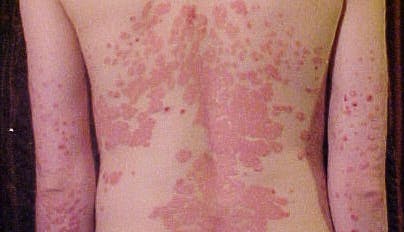Overview
Erythrodermic psoriasis is a rare and severe type of psoriasis. It affects about 2 percent of people living with psoriasis. [1] Erythrodermic psoriasis may be more common in Asians. [2]
Erythrodermic psoriasis often affects nearly the entire body and can be life-threatening.
Erythrodermic psoriasis disrupts your body's normal temperature and fluid balance. This may lead to shivering episodes and edema (swelling from fluid retention) in parts of the body, such as in the feet or ankles. You may also have a higher risk of infection, pneumonia, and heart failure.
Psoriasis is a chronic disease that is caused by an overactive immune system and is associated with inflammation throughout the body. Symptoms may resolve and recur throughout a person's life.



